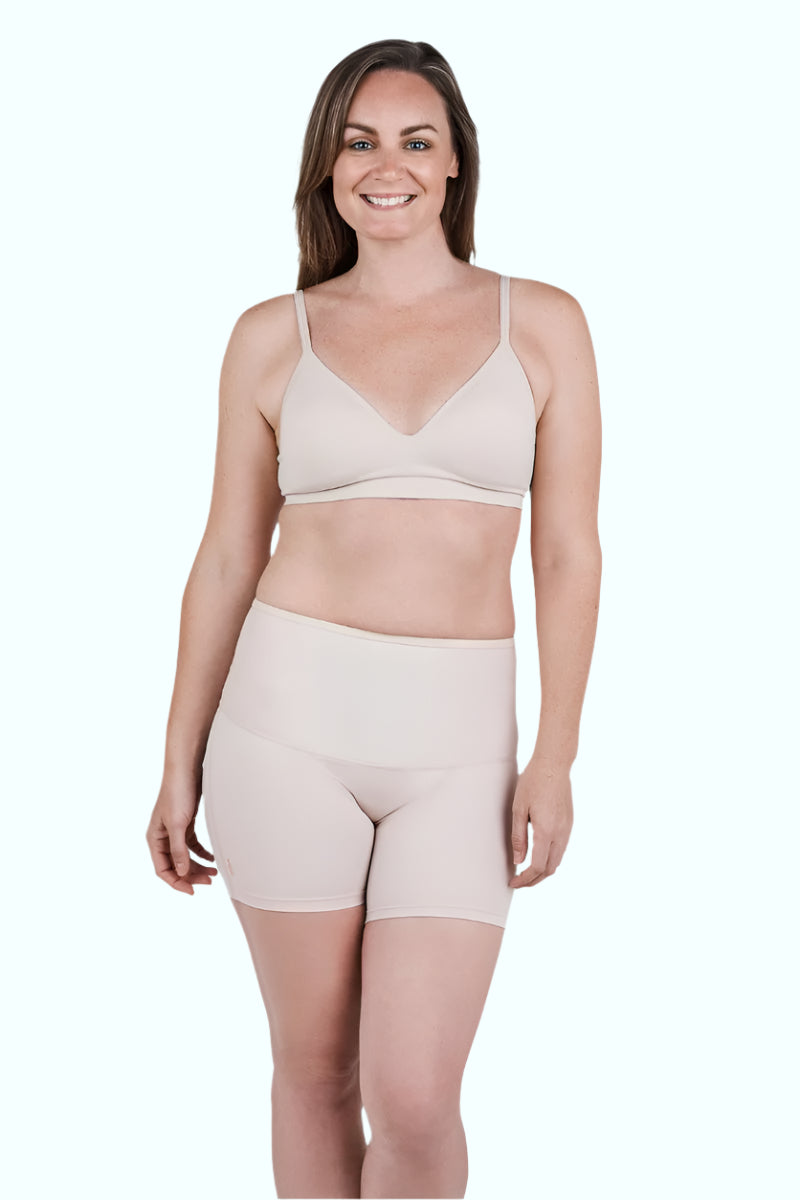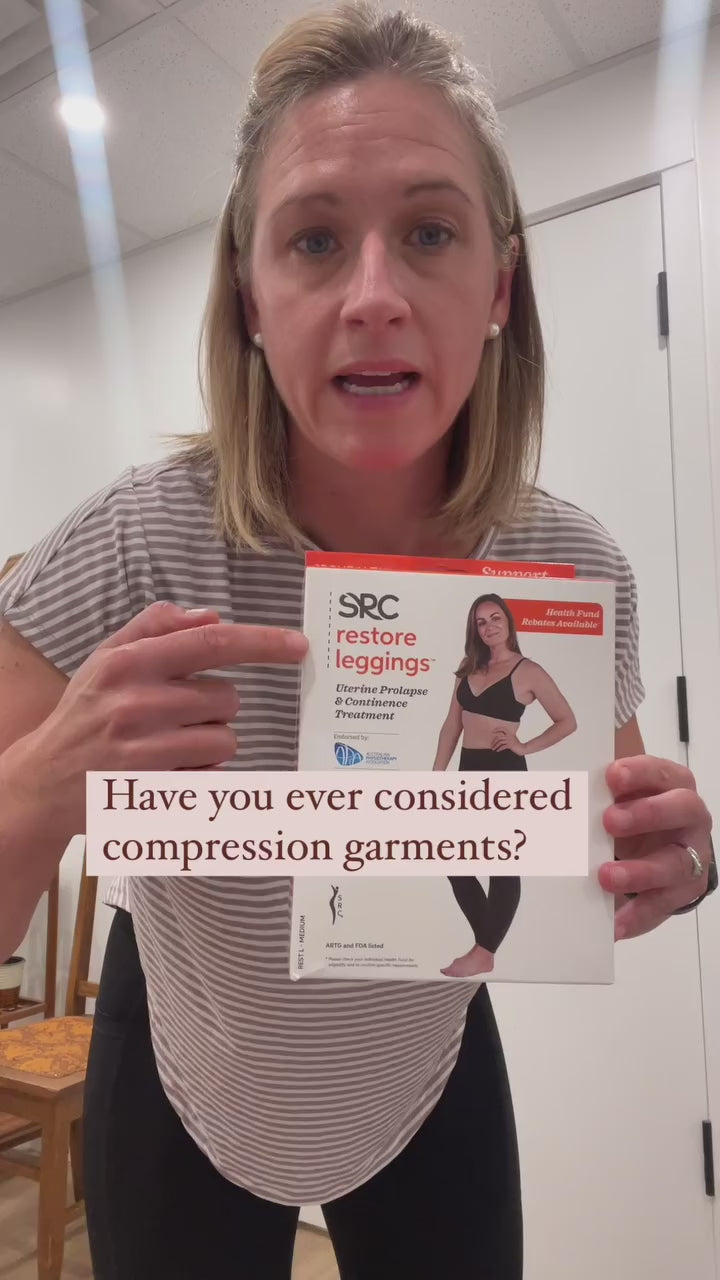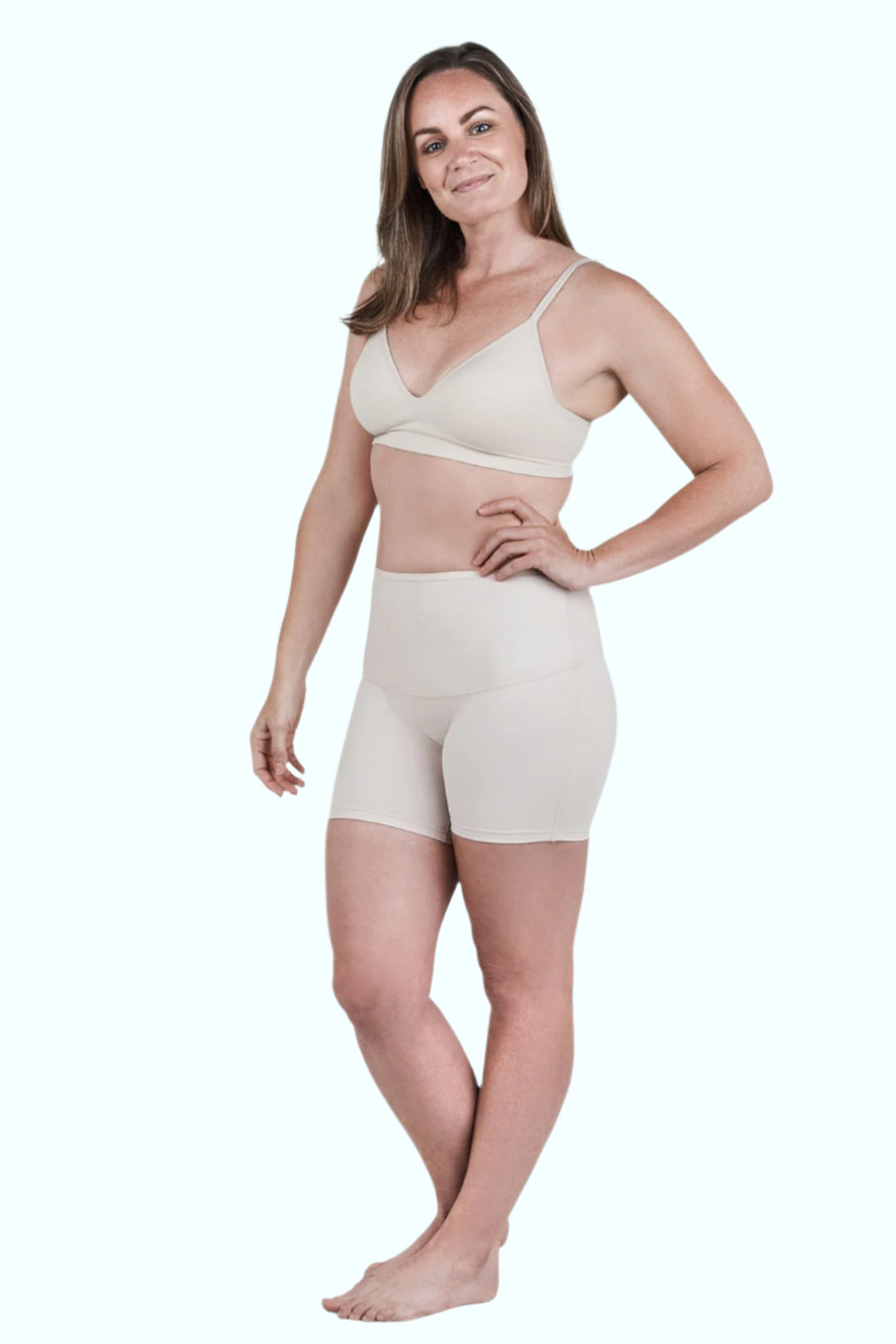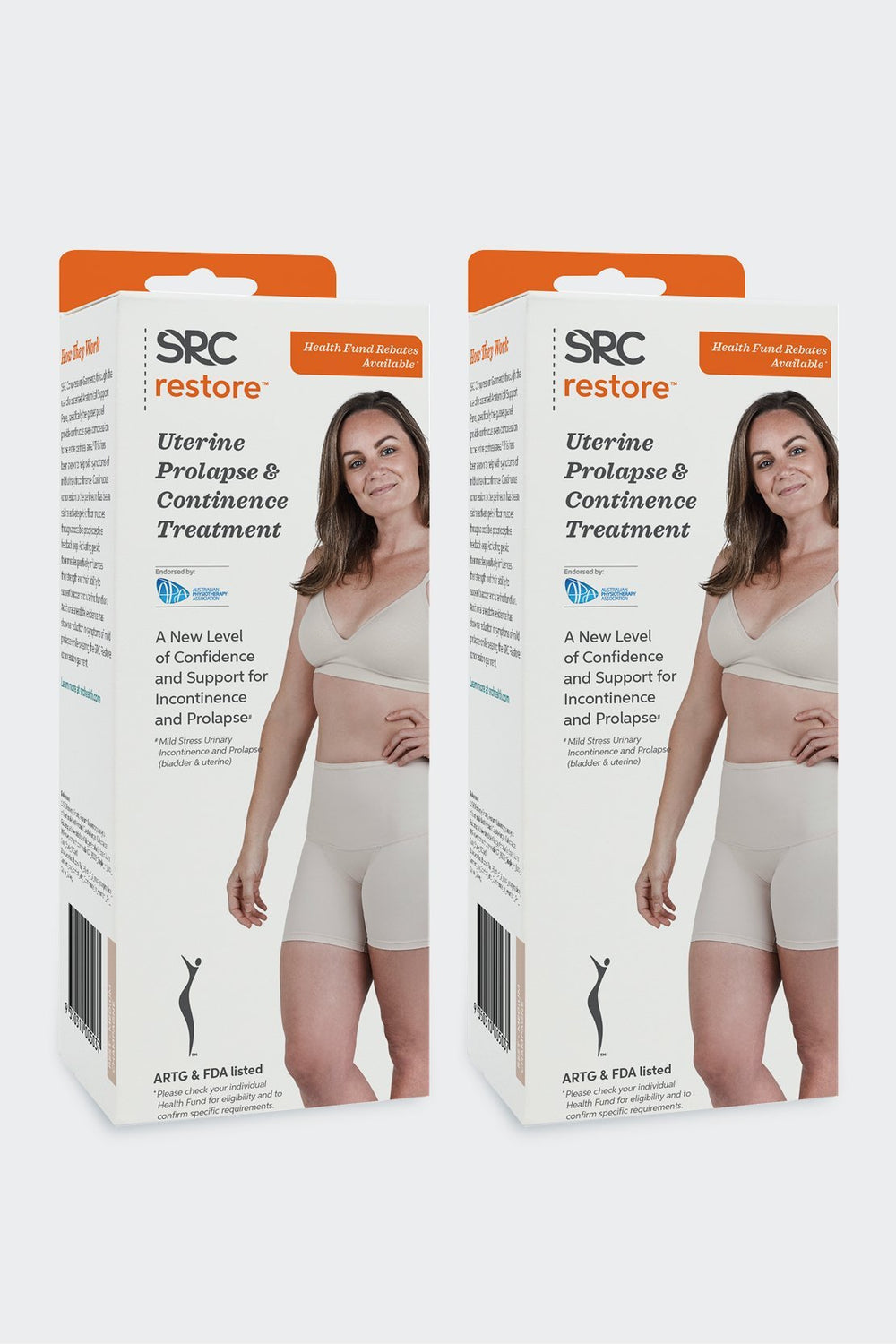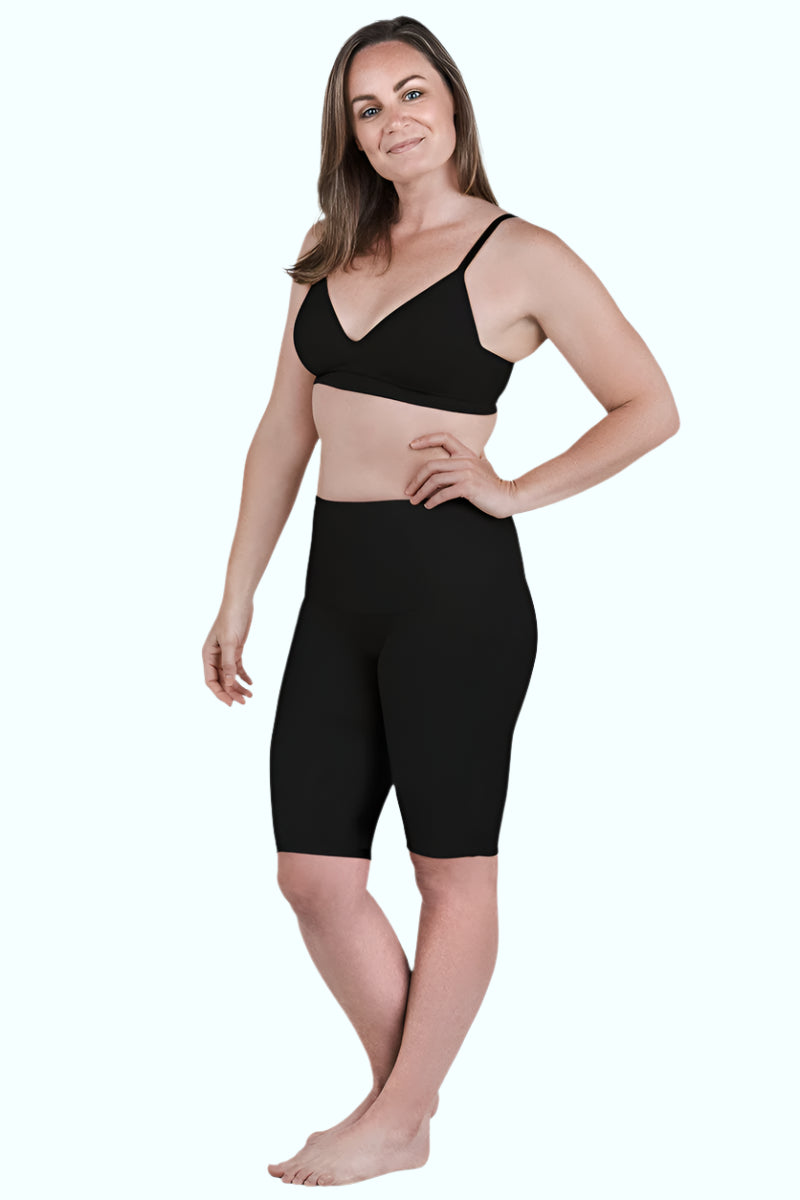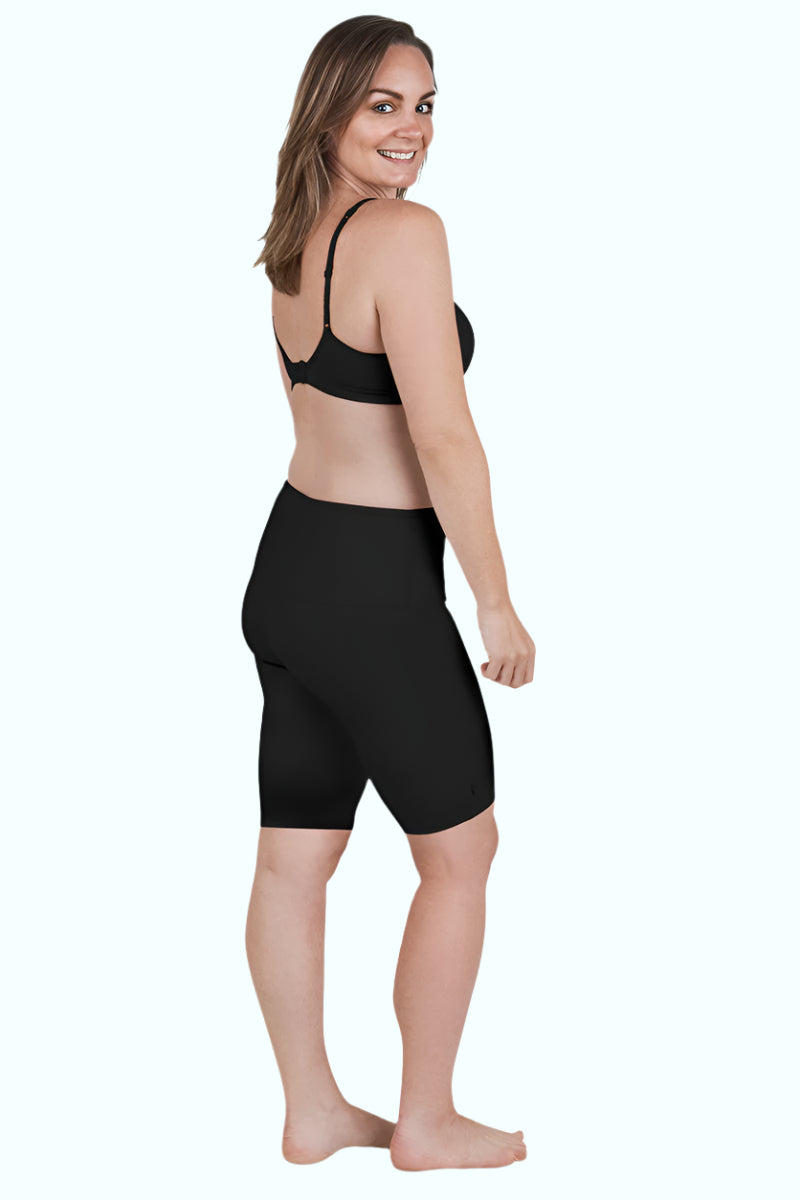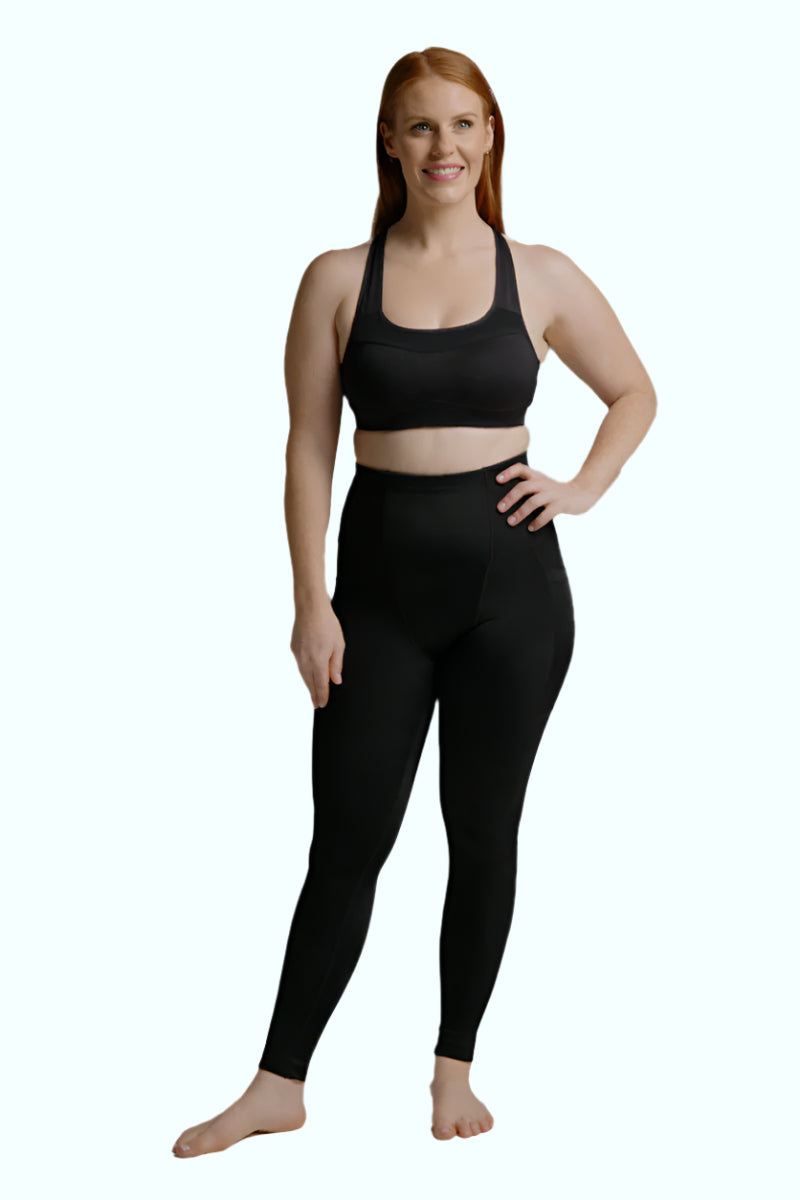Approximate Reading Time: 6 minutes
History of Compression Garments
Compression therapy has a rich history intertwined with humanity's quest for healing and recovery. From ancient practices of bandaging wounds to modern compression garments, the evolution of this therapeutic approach reflects both innovation and tradition.
In ancient times, long strips of cloth served as makeshift bandages, wound firmly around the abdominals of women postpartum to reduce swelling and tighten overstretched muscles. This practice, observed across cultures with variations like:
- Japanese 'sarashi,'
- Hispanic 'faja,' and
- Malaysian 'bengkung,'
highlights the universality of seeking support during vulnerable periods of physical transition.
See the bottom of the article for the fascinating historical timeline of the evolution of compression.
Ancient Wisdom Meets R&D
Despite the advent of modern science and technology expediting postpartum recovery, the tradition of belly binding persists. Sinead O'Donovan, founder of SRC Health, drew inspiration from this ancient practice to create SRC Recovery Shorts—a fusion of ancient wisdom with contemporary design and research. Collaborating with obstetrician Grant Saffer, these shorts offer new mothers support during the physically and emotionally taxing 4th Trimester.
How do Compression Garments Work?
At the core of compression therapy lies its ability to apply pressure to veins, reducing their diameter and facilitating blood flow back to the heart. While ancient healers utilized bandages, modern compression garments emerged in the 1950s with advancements in fabric technology and medical understanding. This evolution owes much to pioneers like Conrad Jobst and Karl Sigg, whose innovations in graduated compression paved the way for modern compression garments.
SRC Compression Socks, developed to complement pregnancy and postpartum garments, cater to a diverse range of needs. From aiding athletes in performance and recovery to enhancing comfort during extended periods of standing or immobility, these socks epitomize the versatility of compression therapy. Despite the prevalence of compression garments, few prioritize the specific needs of women during the periods of pregnancy and postpartum recovery like SRC Health.
Who can benefit from compression socks?
- During pregnancy
- Postpartum recovery period
- In improving performance and recovery in athletes,
- For use as flight socks or by people who are bed ridden and can not move their legs for extensive periods
- For people who spend a long time on their feet such as nurses, retail assistants, food and hospitality staff, many trades, etc
- For diabetics
Compression garments offer tangible benefits for both recovery and performance.:
- Compression socks and compression shorts can improve blood flow, helping to pump lots of oxygen and nutrients to your cells, fuelling your muscles and enhancing your recovery and cell repair.
- Compression shorts, compression leggings and compression socks all work by wrapping snugly around your muscles to support and stabilise them while you exercise. They effectively stabilise the area and reduce muscle vibration which can cause soft tissue damage, premature fatigue and reduce delayed onset muscle soreness (DOMS) – the pain you feel next day after that heavy work out.
- Compression garments are also used to reduce blood pooling and swelling caused by venous conditions, spending extended periods of time on your feet or not moving during periods of travel or being bed ridden due to illness.
- Compression socks, shorts and compression leggings can all improve proprioception and reduce muscle oscillation - movement of the muscle that happens as your foot hits the ground or your fist strikes at a boxing bag when vibration ripples through the muscle as the result of your movement. This stabilisation in turn decreases pain and saves energy providing the wearer with the ability to perform harder for longer.
- Compression shorts, leggings and compression socks can also be beneficial in helping self-regulate the body temperature keeping the wearer warm or cool and are therefore they can be beneficial to people of all levels of physical ability. Research also indicates that the highest benefits will be accumulated at the highest level of exertion.
- Compression shorts, socks and compression leggings will all help your muscles warm up faster which helps reduce the risk of injury and improves your performance.
- The moisture wicking fabrics in many compression garments can help keep you dry and comfortable whilst eliminating chafing and friction that is produced when more traditional garments are worn.
A wealth of research underscores the benefits of compression therapy.
Studies have shown that compression garments reduce muscle soreness, promote muscle strength recovery after exercise, and improve perceived exertion in endurance athletes. You can check out a great summary of the research here.
Moreover, they minimize chafing and friction during physical activity, enhancing overall comfort and performance. In addition to the plethora of benefits already known, Mizoguchi et al 2023 research has shed light on the potential of compression socks in managing conditions like nocturia. Nocturia, characterized by frequent nighttime urination, can disrupt sleep and impact overall well-being.
Compression socks could offer relief by improving blood circulation and reducing fluid retention, thus alleviating symptoms associated with this condition. This innovative approach highlights the versatility of compression therapy beyond traditional applications, showcasing its potential in addressing diverse health concerns.
The analogy of pregnancy and childbirth to running a marathon, by a 2015 study from the University of Michigan, underscores the importance of proper support and recovery during the 4th Trimester. SRC Health remains committed to evidence-based solutions, collaborating with experts to design products supporting women through every stage of life. While scientific evidence predominantly focuses on recovery benefits, the widespread adoption of compression garments by athletes and individuals underscores their value in enhancing performance.
With a growing body of research supporting the benefits of compression therapy, its efficacy extends beyond elite sports to everyday wellness. For over 100,000 mothers, compression therapy has proven a safe and cost-effective treatment for pregnancy-related issues, highlighting its potential for widespread adoption and continued exploration.
In conclusion, compression therapy represents a convergence of ancient wisdom and modern innovation—a testament to humanity's enduring quest for healing and well-being. As research continues to elucidate its benefits, compression garments stand poised to play an increasingly integral role in enhancing recovery, performance, and overall quality of life for individuals across diverse walks of life.
The SRC Health maternity compression range has now grown to be largest, and evidence backed in the world, providing help for pregnancy, postpartum recovery, surgery, incontinence and prolapse.
COMPRESSION GARMENTS EVOLUTION TIMELINE
Healers in ancient Rome and Egypt used bandages to wrap patients’ legs to treat injuries but compression garments were not invented until the 1950s when the more modern fabrics became available, and medical science understood the way in which compression worked. It took a long time to arrive at the compression shorts, compression socks and compression leggings that we know and love today. The history is fascinating and in parts somewhat grey as to who and when can be credited with the invention of modern compression socks.
|
5000-2500 BCE |
Drawings in caves of Tassili in Sahara show images of soldiers with bandaged lower extremities. |
|
|
1600 BCE |
Edwin Smith Papyrus included evidence of mechanical compression therapy for legs. |
|
|
450–350 BCE |
Hippocrates treated his patients' leg ulcers with tight bandages, which were described in his Corpus Hippocraticum. |
|
|
Middle Ages 500-1500 |
Evidenced by the works of Avicenna, Giovanni Savonarola, Guy de Chauliac, Ambroise Paré, Girolamo Fabrizio di Acquapendente leg compression bandages were used for therapy to treat enlarged veins of the legs. |
|
|
1537-1619 |
A precursor of elastic stockings were gaiters, a sort of stockings without feet and with anterior or lateral laces), already described by Fabrizio of Acquapendente and used for various reasons. They were made of dog skin, string, rubber etc., but they were rapidly abandoned because they produced oedema of the foot and ankle. |
|
|
1628 |
William Harvey discovered the link between venous stasis and the external pressure. Following that discovery, various compression measures were introduced for therapy: laced stockings, elastic bands, and tight bandages with resin. |
|
|
1846 |
7 years after Goodyear vulcanisation, Brockedon W and Thomas Hancock in England registered the first patent for fine and quadrangular rubber thread, which rapidly conquered the textile industry. |
|
|
26th October 1848 |
The elastic stocking was born on the when William Brown of Middlesex registered patent no. 12294 concerning the elastic stocking in India rubber manufactured on hand looms. |
|
|
1861 |
William Saville makes the first example of surgical elastic stockings manufactured on hand looms and also to measure. |
|
|
1871 |
Römpler introduces elastic weaving, however, rubber elastic stockings continued to be poorly regarded by doctors and patients because they were thick and poorly transpiring. |
|
|
Late 1800’s |
Fisher and Lasker, German phlebologists, discover that the application of the external pressure helped to treat blood clots in the lower extremities. |
|
|
1904 |
Oskar Huppelsberg produced the first seamless stockings known as “Ohrs-Ohrsana” |
|
|
1917 |
Elastic stockings with fibres other than rubber appeared for the first time produced by the Thalysia company |
|
|
1938 |
The year of the first revolution in stocking production because Nylon® (polyamide) was invented and patented (1935) by Wallace H Carothers at the factory founded by the French chemist Eleuthère Irènèe DuPont of Nemours |
|
|
1959 |
The second revolution arrived in the 1960s, again under the DuPont name, first with the patenting and then with the marketing of Lycra® (Elastam or Spandex in the USA and Canada), which would become the fibre of the 20th century. |
|
|
1950’s |
Medical engineer and inventor Conrad Jobst is the most likely inventor of the “modern” compression garment. Himself a sufferer of severe chronic venous insufficiency (similar to varicose veins), a condition that occurs when veins in your legs don’t function properly and instead of allowing blood to be pumped back to the heart, the valves malfunction and cause blood to pool in your lower legs, Jobst is the epitome of the saying “necessity is the mother of invention”. He also developed precision gun sights for the U.S.A during the First World War and patented the car sunroof, but compression socks, which he invented around 1950, were his flagship achievement. |
|
|
1958-1960 |
Karl Sigg invents the graduated compression elastic stocking produced by the Ganzoni Sigvaris® company. Previously to that compression socks and stockings had uniform compression which distributes the same pressure from the ankle and up toward the knee. Graduated compression socks and leggings are the more effective type of compression garment due to their ability to boost circulation. Graduated compression socks and compression leggings are tightest around the ankle and provide less pressure as they go up the leg helping blood go back up to your heart against the force of gravity by applying pressure to vein walls from the outside. More blood pumping going through the better your legs will feel eliminating swelling from blood pooling. |
|
|
2008 |
Sinead O’Donovan invents and patents the world’s first Compression Postpartum Recovery Short with Anatomical Support Panels that deliver targeted compression, ideal for treating multiple conditions such as perineal wounds, C-Section, abdominal muscle separation (DRAM). The SRC Health maternity compression range has now grown to be largest and evidence backed in the world, providing help for pregnancy, postpartum recovery, sport, surgery, continence and prolapse. |
References:
https://en.wikipedia.org/wiki/Compression_stockings
https://www.newyorker.com/culture/rabbit-holes/a-word-of-thanks-for-my-compression-socks
https://www.terapiacompressiva.org/wp-content/uploads/2018/12/Consensus-CompressiON-2018.pdf






